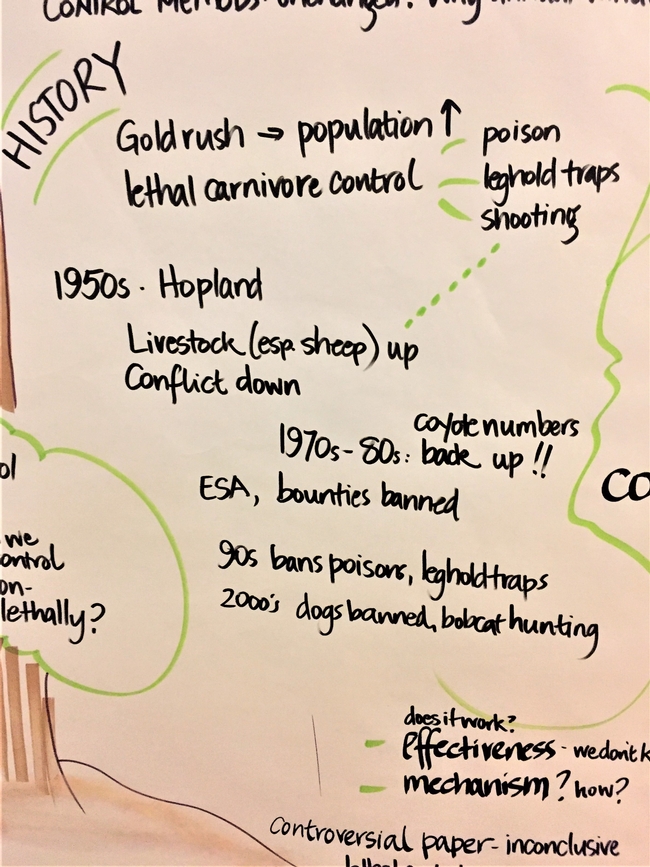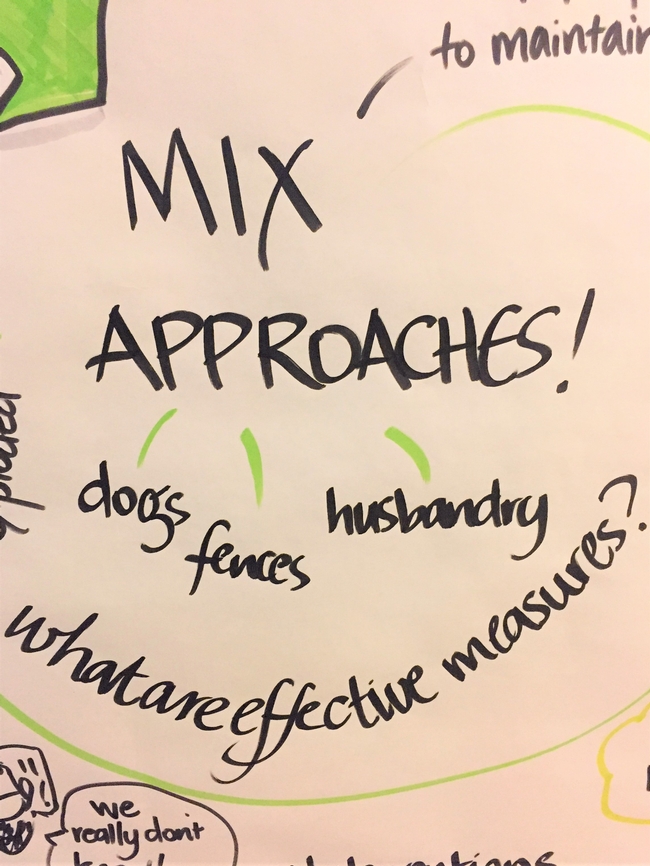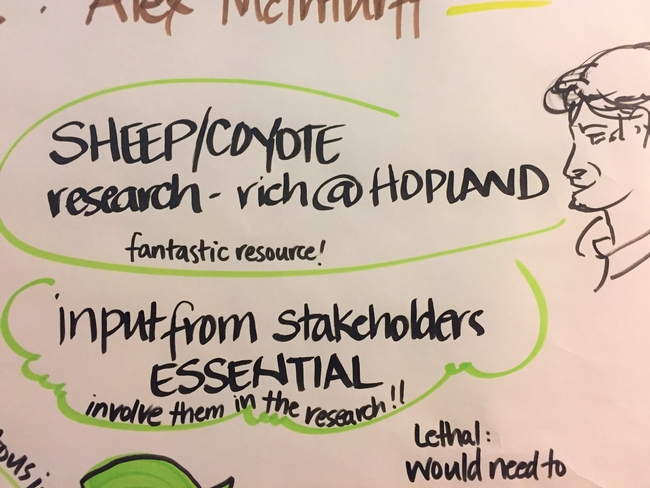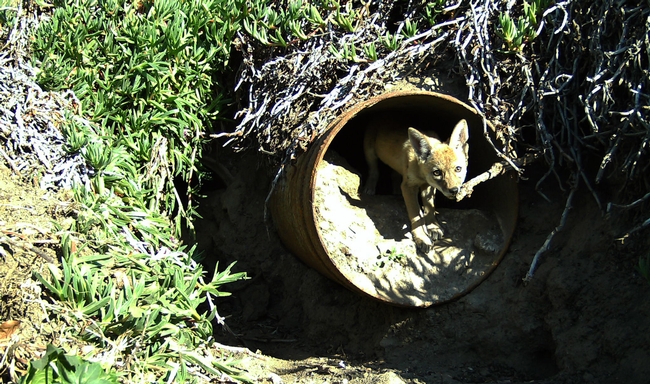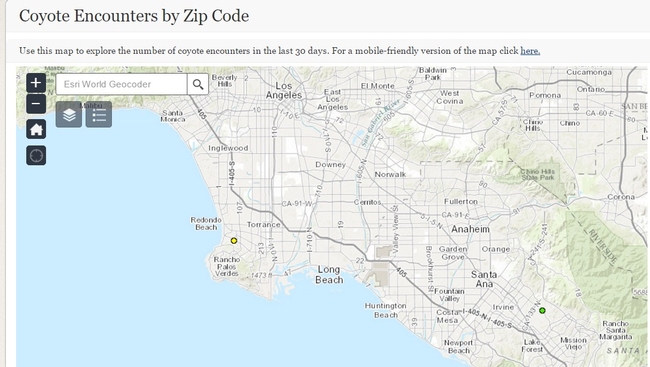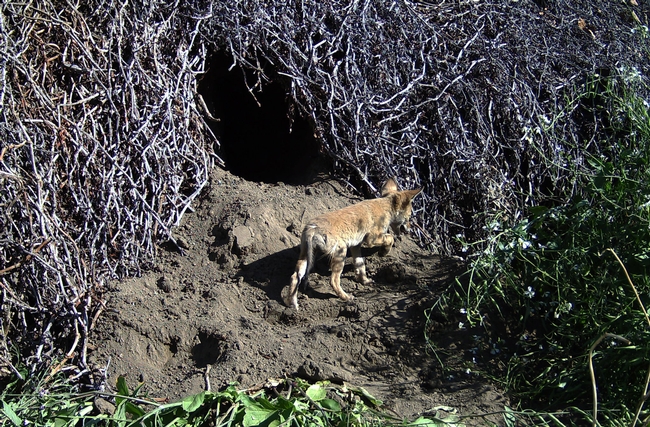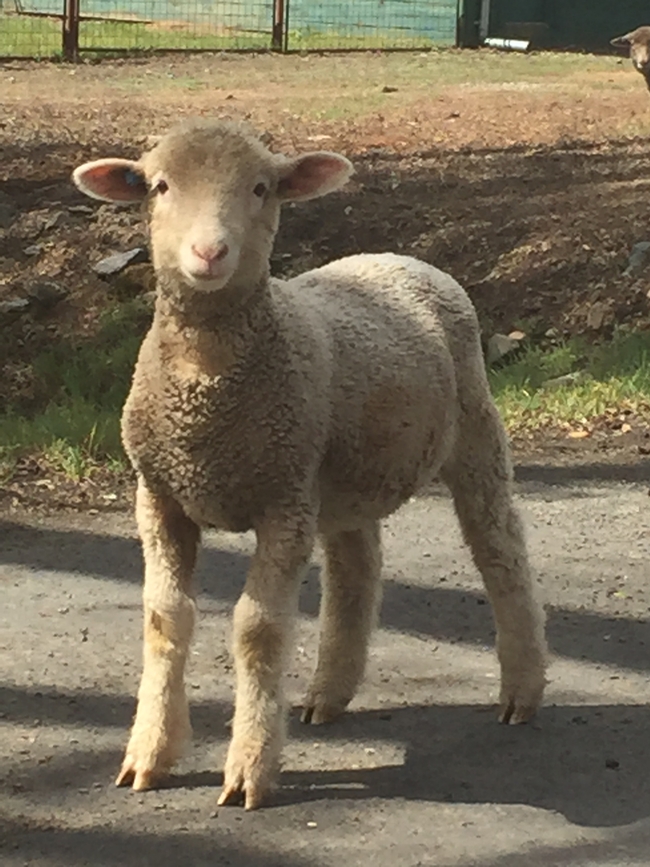
Posts Tagged: coyote
Living with Wildlife – Outcomes and actions following the recent workshop at UC ANR Hopland REC
submitted by Hopland REC Director, Dr. Kim Rodrigues
Since arriving as the Director for HREC in 2013-2014, I have been committed to protecting all of the amazing resources here at the Hopland Research and Extension Center (HREC,) with a dedicated effort to saving wildlife and reducing losses of sheep. As one of the last remaining sheep research facilities and one of the largest flocks in our immediate area, the sheep are prey to coyotes and other potential predators on the landscape.
With increasing numbers of wildlife across the region, state and nation, conflicts between humans and wildlife are increasing. Our workshop at HREC on August 31, 2017 focused on living with wildlife while managing livestock, with an overarching goal to seek a shared understanding of non-lethal tools through research, implementation and education.
Over 80 participants from a diversity of backgrounds including researchers, ranchers, community members and non-profits attended. All participants experienced demonstrations of several non-lethal tools, including some exciting applications of scary devices, such as Halloween decorations, collars to protect sheep with strobe lights and canine avoidance noises built into them, fencing with an electric charge, lion proof pens and flagging attached to deter movement across the fencing and more. Many participants wanted more hands-on field time with the ranchers using these tools and HREC is working to develop this for late spring/early summer of 2018.
We explored new and emerging research with Dr. Brashares and his team only to learn that it “depends.” Everything is situational and place-based and this is a key lesson or outcome from the meeting. The situational questions asked of each rancher on the panel may help inform the choice of tools and the mix of tools to reduce losses.
We learned that there are practical barriers – such as time, money and labor, as well as scientific barriers to fully implementing non-lethal tools. Yet, one common message was to mix and match tools and vary them frequently. “Match” the tools to your specific situation(s) and mix them up over time and space frequently. Many creative ideas came up to help share tools and other resources and the concept of a lending library with non-lethal tools available to ranchers emerged as a local action HREC will explore further with our community partners.
We understand the importance of strong working relationships and diverse partnerships and we will work with the participants who were able to attend and outreach to partners, such as local agricultural commissioner and staff, California Department of Fish and Wildlife and Wildlife Services to ensure we are all working together.
We learned from and valued the diverse perspectives and there was a tremendous sense of respect for all people present that allowed a dynamic and safe learning environment.
Already, HREC is moving forward with new research to better track and document the work of our large guard dogs (LGDs) as a tool to prevent losses of livestock. The concept of putting GPS collars on our dogs and tracking their movements over a variety of pasture types and sizes and landscapes is already being discussed and outlined by HREC staff and research colleagues. It is recognized that LGDs can and do kill wildlife, so they are not truly a “non-lethal” tool yet they remain one of the most important tools livestock managers rely on to protect their animals. Lethal controls are still used in combination with non-lethal tools – snares, calling, shooting – in most ranching situations but not all. Yet all ranchers shared their goals to reduce losses of both livestock and wildlife and agreed that preventing losses is the best approach in all cases.
I welcome you to visit our HREC site and you can review the amazing graphic art that captured the essence of the workshop, as well as the rancher panel interviews, the presentations and more online. Please join us for future events.
Together, we may find innovative tools and solutions and keep ranching viable in our communities to prevent further fragmentation and conversion to other uses, saving both livestock and wildlife.
New mobile app to track close encounters with coyotes
As urban coyote numbers rise, the animals are increasingly crossing paths with residents. There have been police reports of coyotes attacking pets and even people, but there has been no place to report casual coyote encounters. Now there is a new mobile app to help keep track of where those wily coyotes are coming into contact with people. Hikers and people walking their dogs can use Coyote Cacher, created by the University of California Agriculture and Natural Resources, to report coyote sightings.
“I'm so excited about this app because it will help us to collect better information on coyote conflict in California,” said Niamh Quinn, UC Cooperative Extension advisor, who studies human-wildlife interactions. “Coyote conflict appears to be particularly high in Southern California and it seems to be emerging in other areas. The information people provide through Coyote Cacher will help inform government agencies, wildlife researchers, park managers and residents to make better coyote management decisions.”
By reporting encounters with coyotes in their neighborhoods, residents can share information to help neighbors keep their pets and children safe.
“There is a coyote encounter map that will allow the public to keep track of what is happening in their areas,” said Quinn, who is based in Orange County.
Individuals can use the app to check a map to see locations of coyote sightings. Pet owners may decide not to let their pets out at night unsupervised in areas where coyotes have been reported.
“The app allows users to sign up for email alerts,” Quinn said. “These alerts – green, yellow and red – notify users when there is a coyote encounter reported in their zip code.”
Green is the lowest alert level and will give alerts for all coyote encounters in the user's zip code, from sightings to a person being bitten. Yellow will not alert users about sightings, but will let them know about all levels of pet interactions, including pets being chased or attacked off-leash by coyotes, and red alerts. Red is the highest alert level and allows for users to be informed only about the more serious incidents, for example, a coyote attacking a pet on a leash or biting a person.
“This app will also allow me to gather baseline information on coyote activity and the success of community hazing,” Quinn said.
Community hazing involves people shouting and waving their arms at coyotes and generally being obnoxious to make the nuisance animals afraid of humans.
“It would be great if everyone would do this when they see a coyote, but at the moment this is not really happening,” Quinn said. “Also, coyotes in Southern California appear to take a lot of risks and come in close contact with humans so community hazing may not deter them.”
More intense hazing, like shooting them with paintball guns, might be more effective techniques for government agencies to manage urban coyotes, she said.
To find out if any of these techniques work, the UC wildlife scientist would like to put collars on urban coyotes to study whether the animals move away from locations after hazing.
“We are seeking funding to collar coyotes to find out more about their activity and social structure and how they react to different types of management,” Quinn said. “We would need to figure out if the effects of the hazing are long-lasting, or if the coyotes just revert to ‘bad behavior' when the hazing is stopped.”
Although Quinn's research is focused on California, Coyote Cacher can be used anywhere in the United States. The website also offers information about urban coyotes.
Coyote Cacher can be used on a computer or on a mobile device at http://ucanr.edu/CoyoteCacher.
The Coyote Cacher app was designed by UC ANR's Informatics and Geographic Information Systems and funded by UC Cooperative Extension in Orange County.
Living with wildlife at Hopland REC
Recently at Hopland REC a few novel approaches have been taken to manage our flock of over 800 Western whiteface sheep. We share our landscape with numerous wildlife species and need many and varied tools in our toolbox to help protect them including fencing, guardian animals and mob grazing.
Take a look at this article in our local paper the Ukiah Daily Journal which covers some of the results so far...
http://www.ukiahdailyjournal.com/article/NP/20160602/NEWS/160609939
Coyotes are becoming a political problem in SoCal

The reporter spoke with Robert Timm, UC Cooperative Extension wildlife specialist emeritus and a coyote expert.
"We all have a soft spot in our hearts for wildlife, it's why many of us went into the field," Timm said. However, left unchecked, coyotes kill pet cats and dogs, and even pose a threat to humans. "It's a very contentious issue and not an easy one to deal with. ... We all have our individual feelings about it and it's hard to separate that from what we know scientifically."
Coyotes have been making their way into Southern California suburbs since the 1970s, mostly living in the shadows. But when they become habituated to humans, conflicts can arise. Current management practices rely on deterrence and hazing. But when that isn't enough, trapping and removing some problem coyotes appears to send a message to the rest of the coyotes in the neighborhood, Timm said.
"If there are problem coyotes reported in a specific area and you go in and remove a few, it seems to wise up the rest of the coyotes and make them wary of people," Timm said.
However, many advocacy groups lobby against any kind of coyote management that uses traps or euthanization. Relocation of animals is illegal in California.
The coyote issue, Timm said, is fraught with emotion.
Coyote incident report in LA Times includes UC info
A man lying down for a nap in Los Angeles' Griffith Park woke up to a coyote biting his foot, according to a brief article in the Los Angeles Times over the weekend. The man was not seriously injured, but the unusual encounter with wildlife increased local alarm over a spate of coyote-related incidents in the southland.- Another person was bitten by a coyote in Griffith Park in August.
- Pop singer Jessica Simpson's poodle-maltese mix was snatched by a coyote on Monday night.
- On Wednesday, another maltipoo was nabbed in Hollywood Hills.
The article cited a 2004 UC study that found coyote aggression and attacks on people and pets on the rise in the state, particularly in “suburban-wildland interface” areas of Southern California.
For more on coyotes, see http://coyotebytes.org, a UC Cooperative Extension Web site that provides information to homeowners, land managers, agency personnel, and others to help solve coyote-human conflicts.
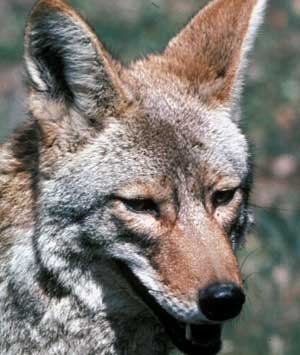
Coyote

